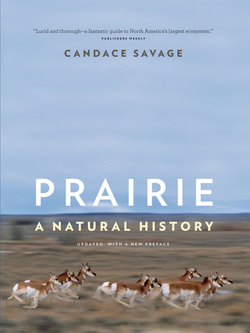Читать книгу Prairie - Candace Savage - Страница 33
На сайте Литреса книга снята с продажи.
Оглавление{ three }
THE GEOGRAPHY OF GRASS
I am the grass. Let me work.
CARL SANDBURG, “GRASS,” 1918
NATIVE GRASSES ARE the heart and soul of the prairie, the living link between the physical resources of the Great Plains— sunshine, rain, and soil—and almost every other aspect of the ecosystem. At first glance, grasses may look simple or even primitive. In fact, they are highly evolved organisms, especially adapted to cope with extreme climatic uncertainties, including frequent drought. From probable origins in the African region of the supercontinent Pangaea some 60 million years ago, grasses have migrated to every continent except Antarctica and have diversified into about 10,000 species throughout the world. Of these, some 140-odd species, in 41 genera, naturally occur in the Great Plains grasslands. That’s twelve dozen distinctly different native grasses! Some of them, like the magnificent big bluestem, or turkey foot (so called for its large, three-lobed seed head), grow up to 10 feet (3 meters) tall. Others, like the stick-in-your-socks specialist needle-and-thread grass, seldom exceed 3 feet (1 meter) in height. At the low end of the scale are species like the diminutive blue grama, which grows close to the ground and rarely raises its elegant, eyebrow-shaped seed heads more than a few hand widths above the soil.
Yet despite these obvious differences, the prairie grasses all share one crucial ability. They are tuned in to the climate, able to dial their metabolisms down when conditions are unfavorable for growth and speed them up when the weather improves. Far from being passive stalks blowing idly in the wind, prairie grasses are lean, mean growing machines, designed to make the most of limited and unreliable resources.
